Canine discuss with their our bodies. It could actually occur so quick that we miss refined nuances, after which we marvel why they behave a sure means. To know our pups higher, we should be taught to pay higher consideration to their physique language. Canine paw lifts are one expression that always go ignored, besides by hunters, after all, equivalent to within the picture under of a fowl canine. Right here, your canine lifts a paw and positions his ears ahead in alert, immediately stares at prey, put his tail out and poises his physique to create a message of excessive drive and pleasure, not nervousness.
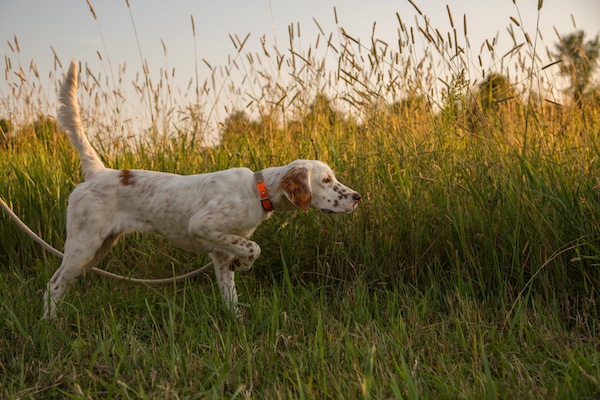
English Setter pet in coaching, lifting a paw. Pictures by Shutterstock.
1. The anxious canine paw elevate
It’s the paw lifts by non-hunting canine that may be an indication of tension, stress, and/or concern. I translate this physique language in my Canine Decoder smartphone app utilizing illustrations by Lili Chin of Doggie Drawings. There are 60 completely different poses and situations. Every pose options three components; The Pose, The Information and The Particulars in regards to the pose and the app’s star, Diamond:
The Pose
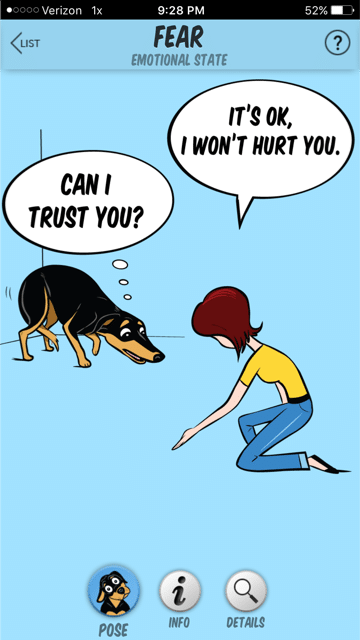
Illustration from the Canine Decoder smartphone app, illustrated by Lili Chin.
The Information
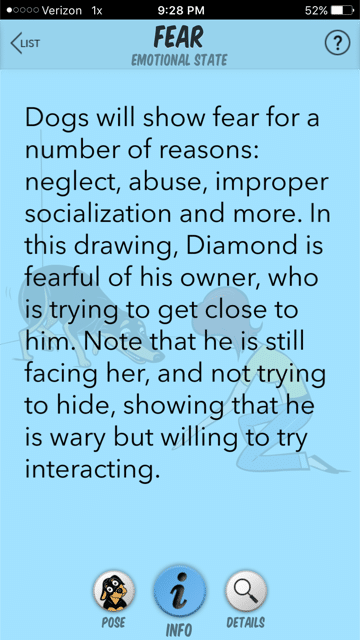
Illustration from the Canine Decoder smartphone app, illustrated by Lili Chin.
The Particulars
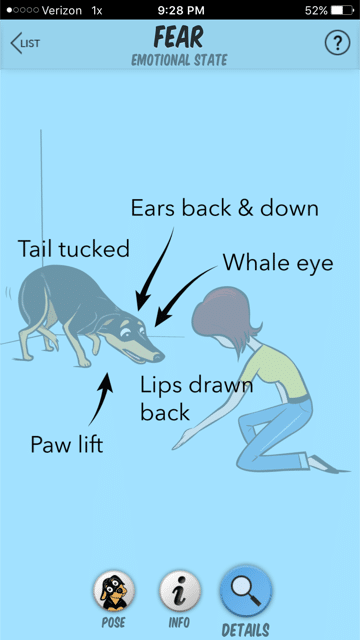
Illustration from the Canine Decoder smartphone app, illustrated by Lili Chin.
Within the above illustration, a canine is displaying concern in a number of methods, together with a paw elevate. Canine will typically elevate a paw when anxious, so it’s essential to have a look at all the physique — together with ears, tail, eyes, and paw — when studying your pup. It’s additionally essential to hurry learn. Canine discuss a mile a minute with their physique, altering alerts right away. Don’t be discouraged in case you miss refined indicators at first — the extra you listen, the higher you can be at understanding your canine.
In reality, I’ve a mantra all of my purchasers use every time they’re with their canine. In coaching, simply hanging out, enjoying fetch, using within the automotive… they ask themselves, “What does my canine want now?” This helps them develop into extra conscious of what their pup is saying. Strive it your self!
2. Generally, a canine lifts a paw in anticipation
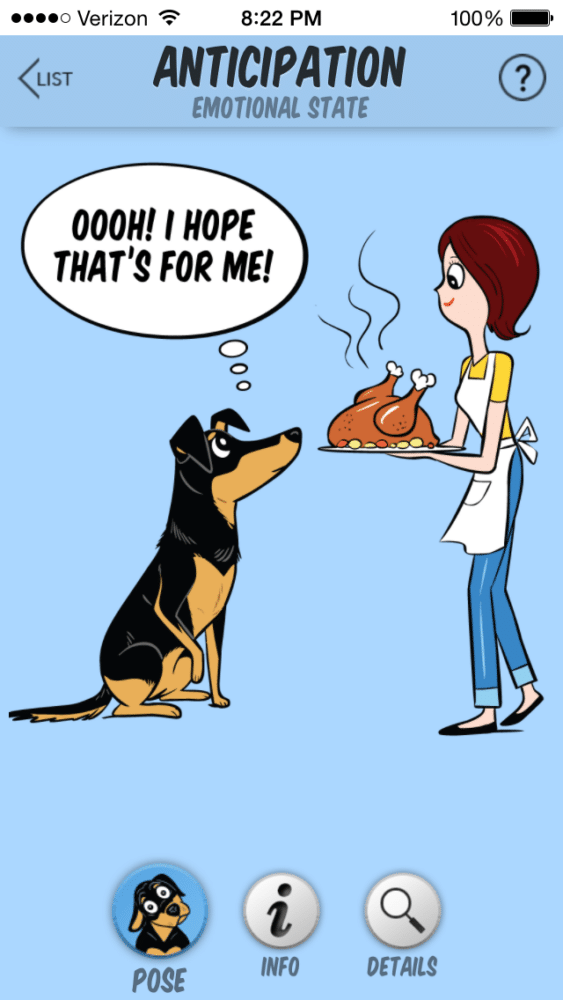
Illustration from the Canine Decoder smartphone app, illustrated by Lili Chin.
Paw lifts additionally will be an expression of anticipation, as proven above. On this context, you see that Diamond has excessive hopes that the turkey is for him. Ears and eyes alert, head and sniffer up and prepared, tail out, and a paw lifted mix to sign anticipation.
3. The fearful paw tuck
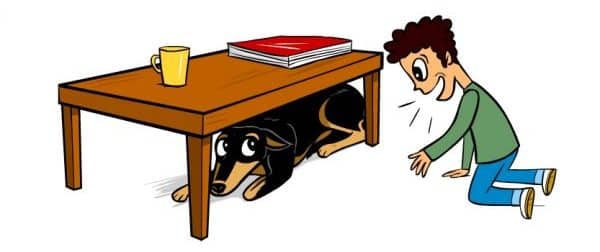
Illustration from the Canine Decoder smartphone app, illustrated by Lili Chin.
Canine additionally could tuck a paw to convey concern. Usually, when a canine tucks a paw whereas mendacity down, it’s an indication of rest, however not all the time as proven within the picture above. Diamond is hiding below the desk, not desirous to work together. Discover that his left entrance paw is tucked and he is not directly staring on the boy. Diamond additionally has pulled his physique in and away from the boy, changing into small and tight — these are all indicators that he’s scared and will chew. If the boy doesn’t retreat or the dad and mom don’t step in to translate these “keep away” alerts, he might be in severe hazard.
Backside line: Control your canine’s paws
Typically, when a canine lifts a paw or tucks it, it’s one of many first indicators of stress, and if it goes unnoticed might result in, at greatest, frustration for you if an undesired conduct follows — at worst, it might result in a chew.
Our canine rely on us to be taught their language, and by gaining this talent, you’ll discover that your canine isn’t being “cussed” or “dangerous.” As a substitute, you’ll perceive that he’s anxious, excited, or afraid. With this newfound information, you’ll be higher outfitted to assist your canine.
For extra perception, obtain the Dog Decoder smartphone app through iTunes and Google play. It’s also possible to be taught extra from Sarah Kalnajs’s DVD The Language of Dogs in addition to from the e-book Decoding Your Dog: Explaining Common Dog Behaviors and How to Prevent or Change Unwanted Ones by John Ciribassi, Debra Horwitz, and Steve Dale.
Thumbnail: Pictures by Dvorakova Veronika | Shutterstock.
Learn Subsequent: 6 Things to Remember When You Have a Fearful Dog










